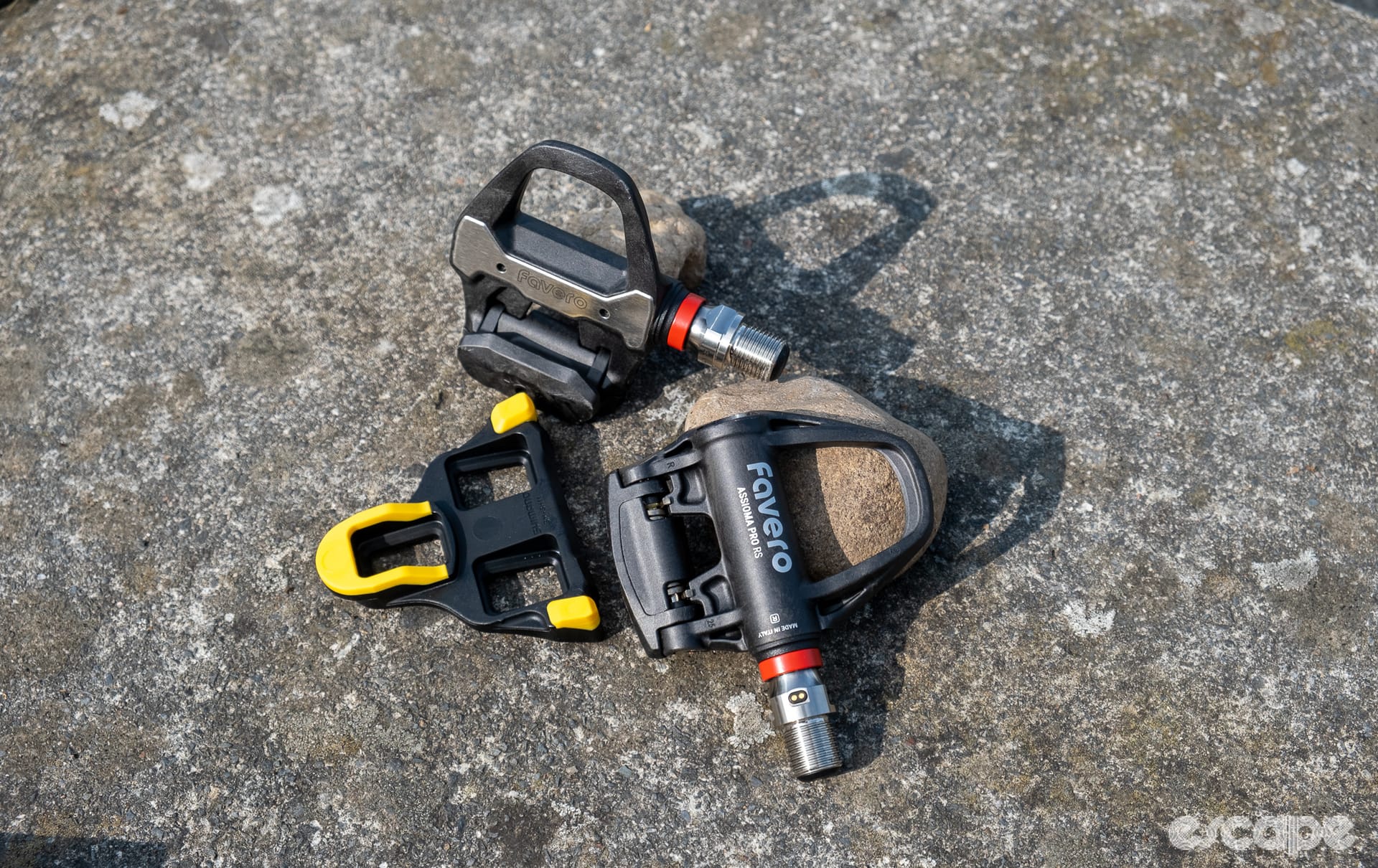🚴♂️ Fitness is not FTP, focus on your whole fitness !
Discover the seven game-changing metrics that will transform your cycling performance beyond the limitations of a single number.
📊 The Bottom Line
For two decades, Functional Threshold Power (FTP) has dominated cycling training. But sport scientists now agree: FTP is just one piece of a much bigger performance puzzle. It’s time to expand your metrics toolkit and train like the complete athlete you want to become.
🎯 Why FTP Alone Falls Short
The Physiology: FTP approximates the exercise intensity just below where lactate floods your bloodstream faster than your muscles can clear it. While useful, it’s a proxy measure that misses crucial performance dimensions.
Common Testing Methods:
- 20-minute time trial: Take 95% of average power
- 8-minute double test: Average both efforts, take 90%
- Ramp test: Final one-minute power × 75%
🚀 Seven Metrics That Matter More
1. 📈 Power-Duration Curve (PDC)
Plots your best efforts from 5 seconds to 5 hours, exposing unique strengths and weaknesses. Platforms like Intervals.icu and WKO5 model this automatically.
2. ⚡ Critical Power & W′ (Work Capacity)
Separates sustainable aerobic output from your finite anaerobic “battery.” Perfect for pacing breakaways and hilly rides intelligently.
3. 🔄 Repeatability
How many times can you punch 400W for 3 minutes with only 90s rest? This defines road-race survival more than laboratory FTP.
4. 💪 Durability (Fatigue Resistance)
Elite cyclists lose far less power after 3 hours than amateurs. Measure your post-ride power drop to gauge real-world resilience.
5. 💓 Efficiency & Aerobic Decoupling
TrainingPeaks’ Pw:HR tracks cardiac “cost” for given wattage. When drift falls below ~5%, your aerobic system is getting more efficient.
6. ⏱️ Time to Exhaustion (TTE)
Two riders with 260W FTP aren’t equal if one lasts 65 minutes and the other folds at 35. WKO5 calculates individualized TTE from your PDC.
7. ⚖️ Watts per Kilogram—Contextualized
Absolute power rules flat TTs; W/kg rules climbs. Treat this as an outcome of balanced training, not an ever-shrinking target.
🏋️♀️ Smart Training Prescription
📋 From Numbers to Action
🚵♀️ Zone 2 Endurance (60–80% FTP): Mammoth aerobic volume improves mitochondrial density and fat-oxidation pathways.
🔥 VO₂ Max Intervals (110–120% FTP, 3–6 min): Raise the ceiling to enlarge every room in your metabolic house.
⚡ Neuromuscular Sprints (6–12s): Even time-trialists benefit from recruiting fast-twitch fibers.
🦵 Torque Repeats (50–60 rpm, Sweet-Spot power): Big-gear, low-cadence efforts armor slow-twitch fibers.
🔋 Fatigue-Resistance Blocks: Finish long rides with 20–40 min at sweet-spot to teach force production when glycogen is low.
🛠️ Essential Tools for Modern Cyclists
🎯 The Final Word
FTP still matters — it’s just not the only one. Think of it as latitude, not your destination.
The rider who sprints AND endures, who recovers between surges, and who can still press threshold watts after hours in the saddle will always outperform the rider who can only quote a single data point from February’s ramp test.
🚴♂️ Train like the complete athlete you want to become.
Ready to expand your performance toolkit? Keep your FTP test in the calendar—but file it next to a spectrum of smarter metrics. Your results, and your post-ride grin, will thank you! 😊




This is such a game-changer! I’ve been obsessing over my FTP for two years and wondering why I’m not getting faster in races. The durability metric really hit home – I can hold my FTP for maybe 45 minutes max, but I see other riders with similar numbers crushing me in the final hours of long rides. Definitely going to start tracking my power drop after 3+ hour rides. Thanks for opening my eyes to the bigger picture! 🙌
Sarah, you’ve just identified one of the biggest performance gaps in amateur cycling! 🎯 That 45-minute ceiling vs. others lasting hours at similar watts is EXACTLY what durability research is uncovering. Here’s a quick starter protocol: next long ride (3+ hours), do a 20-min tempo effort in the final hour and compare the average power to your fresh tempo power. The difference will be eye-opening! Also try those fatigue-resistance blocks I mentioned – even 2x15min at sweet-spot in the last 45 minutes of weekend rides will start building that “diesel engine” durability. Your FTP might not budge, but your race results definitely will! Keep us posted on how the power-drop tracking goes! 💪
Great article! As a data nerd who lives in WKO5, I love seeing someone explain why the PDC is so much more valuable than a single FTP number. Question though – do you have thoughts on using different protocols for different rider types? I’m definitely more of a diesel engine (can hold threshold forever but my 5-min power is terrible), and I feel like the ramp test always underestimates my true threshold compared to a 2x8min test. Would love your take on matching test protocols to phenotypes!
Mike, you’re absolutely spot-on! 📊 As a fellow data nerd, you’ve hit the nail on the head about phenotype-specific testing. Diesel engines like yourself are CLASSIC candidates for protocol mismatch. The ramp test heavily favors riders with good anaerobic capacity (those last 60 seconds are brutal), while your strength lies in that sustainable aerobic output.
Here’s my take: 2x8min is perfect for your phenotype, and here’s why – it minimizes the anaerobic contribution that skews results for endurance-focused riders. You could also try the 95% of 20-min protocol, but honestly, stick with what gives you consistent, repeatable results.
Pro tip: Use your WKO5 to model Critical Power from your best efforts across multiple durations (5min, 8min, 12min, 20min). This’ll give you a more robust threshold estimate than any single test. The beauty is it accounts for your specific power-duration relationship! 🚀
This is overwhelming but exciting! I’m pretty new to power training (just got my first power meter 6 months ago) and have been doing FTP tests religiously. I understand the concepts you’re talking about, but practically speaking, where should someone like me start? Should I focus on building my aerobic base first, or try to work on all seven metrics at once? Also, is Intervals.icu really that good for free? Seems too good to be true!
Alex, love the enthusiasm! 🎆 Six months in is the PERFECT time to expand beyond FTP-only thinking. Here’s your roadmap:
📍 **Start here:** Focus on Zone 2 base building (60-70% FTP, all day comfortable pace). This builds your aerobic foundation that supports ALL the other metrics. Think 80% of your training time at this intensity.
📈 **Next step:** Track your PDC naturally by doing varied efforts – some 5-min hill repeats, occasional 20-min tempo, maybe a sprint or two. Don’t stress about testing everything at once!
🆓 **Yes, Intervals.icu is THAT good for free!** I’ve been using it for 3 years – the PDC modeling, FTP tracking, and personal bests features rival paid platforms. Start there, upgrade later if needed.
📝 **Pro tip:** Focus on consistency over complexity right now. Nail your aerobic base, and the other metrics will naturally develop. You’ve got years to optimize – no need to rush! 🚀
Excellent breakdown! I’ve been coaching for 8 years and completely agree that FTP tunnel vision is holding back so many athletes. The durability research you mentioned is fascinating – I’ve started incorporating fatigue-resistance blocks into all my athletes’ base training and the improvements in late-race power are remarkable. One thing I’d add: the psychological aspect matters too. Athletes who understand they have multiple strengths (maybe incredible repeatability even if their raw FTP isn’t massive) approach races with more confidence. Great work breaking down complex concepts into actionable advice! 👏
Rebecca, thank you for that amazing insight! 🙏 The psychological aspect is HUGE and something I should have emphasized more. You’re absolutely right – I’ve seen riders transform their race approach once they realize they might be the “repeatability specialist” or the “durability machine” rather than just “the rider with mediocre FTP.”
Your point about fatigue-resistance blocks in base training is gold! 🥇 I’d love to hear more about your protocols – are you doing them weekly, or more periodically? And have you noticed certain rider types respond better to different fatigue-resistance approaches?
The confidence factor is so underrated. When riders understand their unique physiological signature, they stop trying to be someone else’s type of cyclist and start racing to their actual strengths. Game-changer for both performance AND enjoyment!
Thanks for adding that coaching perspective – always great to hear from someone in the trenches! 💪